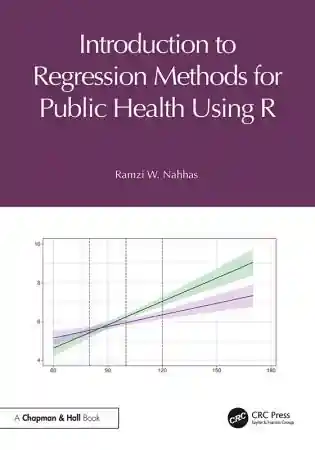
Decision Making in Emergency Critical Care: An Evidence-Based Handbook
- Length: 832 pages
- Edition: 1 Pap/Psc
- Language: English
- Publisher: LWW
- Publication Date: 2014-10-02
- ISBN-10: 1451186894
- ISBN-13: 9781451186895
- Sales Rank: #586171 (See Top 100 Books)
Looking for a concise and authoritative resource to help you manage the types of complex cardiac, pulmonary, and neurological emergencies you encounter as a resident or attending emergency room physician? Look no further than Decision Making in Emergency Critical Care: An Evidence-Based Handbook. This portable guide to rational clinical decision-making in the challenging – and changing – world of emergency critical care provides in every chapter a streamlined review of a common problem in critical care medicine, along with evidence-based guidelines and summary tables of landmark literature.
Features
- Prepare for effective critical care practice in the emergency room’s often chaotic and resource-limited environment with expert guidance from fellows and attending physicians in the fields of emergency medicine, pulmonary and critical care medicine, cardiology, gastroenterology, and neurocritical care.
- Master critical care fundamentals as experts guide you through the initial resuscitation and the continued management of critical care patients during their first 24 hours of intensive care.
- Confidently make sustained, data-driven decisions for the critically ill patient using expert information on everything from hemodynamic monitoring and critical care ultrasonography to sepsis and septic shock to the ED-ICU transfer of care.
Your book purchase includes an eBook version created for Android, iPad, iPhone, iPod touch, PC, & Mac. This eBook features:
- Complete content with enhanced navigation
- A powerful search tool that pulls results from content in the book, your notes, and even the web
- Cross-linked pages, references, and more for easy navigation
- Highlighting tool for easier reference of key content throughout the text
- Ability to take and share notes with friends and colleagues
- Quick-reference tabbing to save your favorite content for future use
Table of Contents
Section 1 Introduction
Chapter 1 Emergency Critical Care
Section 2 Hemodynamic Monitoring
Chapter 2 Tissue Oxygenation and Cardiac Output
Chapter 3 Noninvasive Hemodynamic Monitoring
Chapter 4 Arterial Blood Pressure Monitoring
Chapter 5 The Central Venous and Pulmonary Artery Catheter
Section 3 Critical Care Ultrasonography
Chapter 6 Principles of Critical Care Ultrasonography
Chapter 7 Pulmonary Ultrasonography
Section 4 Pulmonary Critical Care
Chapter 8 Respiratory Failure and Mechanical Ventilation
Chapter 9 Ventilation Strategies in COPD, Asthma, and Pulmonary Arterial Hypertension
Chapter 10 Acute Pulmonary Edema
Chapter 11 High Risk Pulmonary Embolism
Chapter 12 Acute Respiratory Distress Syndrome
Chapter 13 Extracorporeal Membrane Oxygenation
Section 5 Cardiac Critical Care
Chapter 14 Heart Failure and Cardiogenic Shock
Chapter 15 Right Ventricular Failure
Chapter 16 Hypertensive Crises
Chapter 17 Controversies in Arrhythmia Management
Chapter 18 Left Ventricular Assist Devices
Chapter 19 Management of the Post–Cardiac Arrest Patient
Section 6 Neurological Critical Care
Chapter 20 Ischemic Stroke
Chapter 21 Subarachnoid and Intracerebral Hemorrhage
Chapter 22 Seizure and Status Epilepticus
Chapter 23 Myasthenic Crisis and Peripheral Neuromuscular Disorders
Section 7 Gastrointestinal and Hematological Critical Care
Chapter 24 Gastrointestinal Hemorrhage
Chapter 25 Acute Liver Failure and Hepatic Encephalopathy
Chapter 26 Pancreatitis
Chapter 27 Acute Leukemia
Chapter 28 Sickle Cell Disease
Chapter 29 Platelet Disorders and Hemostatic Emergencies
Chapter 30 Transfusion Therapy
Section 8 Sepsis and Septic Shock
Chapter 31 Sepsis
Chapter 32 asopressors and Inotropes
Chapter 33 Principles of Antimicrobial Therapy
Chapter 34 Infections in the Immunocompromised Host
Chapter 35 Burns and Soft Tissue Infections
Chapter 36 Biomarkers in Sepsis
Section 9 Disorders of Acid-Base, Electrolytes, and Fluid Balance
Chapter 37 Acid–Base Disorders
Chapter 38 Electrolyte Disorders
Chapter 39 Rhabdomyolysis
Chapter 40 Acute Kidney Injury and Renal Replacement Therapy
Section 10 Endocrine Critical Care
Chapter 41 Glycemic Control in the Critically Ill
Chapter 42 Diabetic Ketoacidosis and Hyperosmolar Hyperglycemic State
Chapter 43 Adrenal Insufficiency
Chapter 44 Thyroid Storm and Myxedema Coma
Section 11 Toxicologic Critical Care
Chapter 45 Cardiotoxins
Chapter 46 Pulmonary Toxins
Chapter 47 Toxicologic Hyperthermic Syndromes
Chapter 48 Metabolic Inhibitors
Chapter 49 Caustics
Chapter 50 Anticoagulants
Chapter 51 Drugs of Abuse
Chapter 52 Alcohol Withdrawal
Section 12 Environmental Critical Care
Chapter 53 Hypothermia
Chapter 54 Altitude Emergencies
Chapter 55 Drowning
Section 13 Sedation and Delirium
Chapter 56 Delirium
Chapter 57 Sedation of the Agitated Patient
Chapter 58 Induction of Intubation and Sedation of the Mechanically Ventilated Patient
Section 14 Geriatrics and Palliative Care
Chapter 59 The Geriatric Patient
Chapter 60 Palliative Care in the Emergency Department
Section 15 The ED-ICU Transfer of Care
Chapter 61 ED Evaluation of the Critically Ill Patient
Chapter 62 Severity of Illness Scores and Prognostication
Chapter 63 Indications for Contact and Respiratory Isolation







